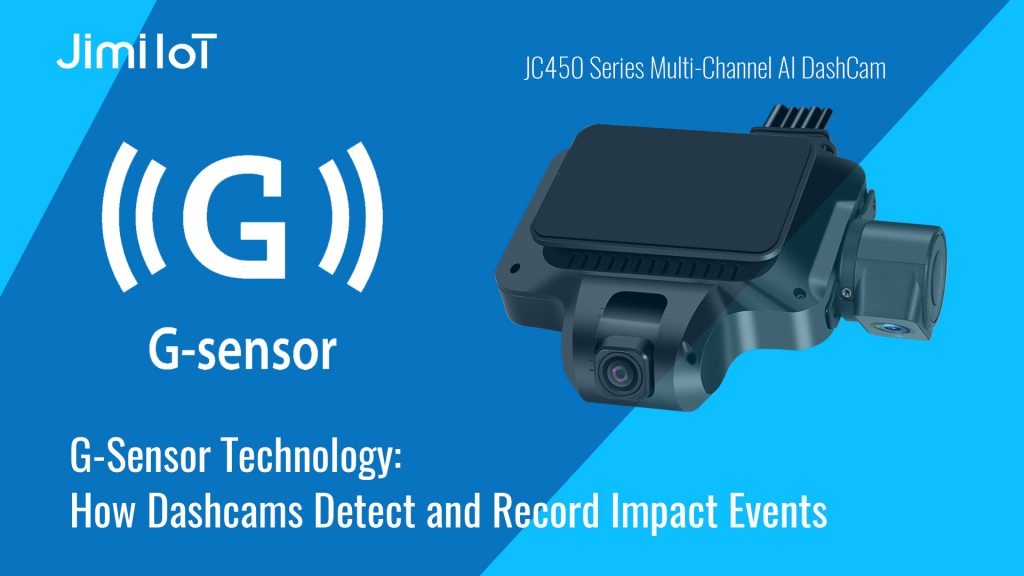Ever had that sinking feeling after a fender-bender, wondering if you missed something crucial? Imagine having a reliable witness that never blinks, always ready to capture those critical moments.
That’s where your dash cam’s G-sensor comes into play. This nifty feature can be your best ally on the road, automatically safeguarding footage when an impact occurs. But how do you activate this lifesaver? If you’re ready to unlock your dash cam’s full potential and gain peace of mind every time you hit the road, you’re in the right place.
Let’s dive in and ensure you’re never caught off guard again.
What Is A Dash Cam G-sensor?
A Dash Cam G-Sensor detects sudden movements or impacts, safeguarding important footage. Activating it involves accessing the dash cam’s settings menu. Adjust the sensitivity level based on driving conditions for optimal performance.
Understanding the functionalities of a dash cam can significantly enhance your driving experience. One such important feature is the G-Sensor. But what exactly is a Dash Cam G-Sensor? This tiny yet powerful component can be your best friend during unexpected situations on the road.Understanding The G-sensor
A G-Sensor, or a gravity sensor, is a crucial part of your dash cam. It detects sudden changes in motion or impact. Imagine you’re driving and suddenly another car hits you from behind. The G-Sensor records the event automatically, ensuring that no critical footage is lost.Why Is The G-sensor Important?
The G-Sensor acts like a safeguard for your recordings. It locks the footage during abrupt movements, such as accidents or sharp turns. This feature ensures these moments are not overwritten by new recordings. Have you ever wondered how you could prove your innocence in a fender bender? The G-Sensor can provide the evidence you need.Real-life Benefits Of A G-sensor
In my experience, the G-Sensor has been a lifesaver. During a minor incident, my dash cam captured everything, thanks to the G-Sensor. The recorded footage helped me resolve the situation quickly and efficiently. Can you imagine the peace of mind it offers knowing you have a reliable witness in your car?How Does The G-sensor Work?
The G-Sensor operates by detecting the gravitational force exerted on your vehicle. When it senses a threshold level of force, it triggers the dash cam to lock the current recording. This mechanism ensures that pivotal moments are preserved. Have you ever thought about how technology can be so precise in moments that matter?Considerations For Using A G-sensor
When setting up your dash cam, adjust the G-Sensor’s sensitivity to suit your driving environment. If it’s too sensitive, it may lock footage unnecessarily during routine bumps. On the other hand, setting it too low might miss crucial incidents. Have you ever tweaked a setting to get it just right for your needs? By understanding what a Dash Cam G-Sensor is and its functionalities, you can make the most out of your dash cam. This feature not only protects your recordings but also provides peace of mind on the road.Benefits Of Activating The G-sensor
Activating the G-Sensor in your dash cam enhances safety. It automatically records sudden movements or impacts. This feature can be crucial for documenting accidents or unexpected events on the road.
Activating the G-Sensor on your dash cam can be a game-changer for your driving experience. This feature is designed to detect sudden movements or impacts, automatically preserving crucial footage when you need it most. Whether you’re a daily commuter or an adventure seeker, understanding the benefits of activating the G-Sensor can save you time and hassle when dealing with unexpected incidents on the road.Enhanced Security And Peace Of Mind
Imagine driving down a busy highway when suddenly, another car sideswipes you. With the G-Sensor activated, your dash cam instantly records the incident, providing you with valuable evidence. This can be particularly helpful in insurance claims, where clear video footage can validate your side of the story. The peace of mind knowing your dash cam has your back during these moments is invaluable.Automatic Recording During Emergencies
The G-Sensor ensures that your dash cam is always prepared to capture important events without you having to manually start recording. In the chaos of an accident, remembering to press the record button is the last thing on your mind. The G-Sensor takes care of this automatically, ensuring you have the footage you need when you need it.Protection Against False Claims
Ever been accused of causing an accident that wasn’t your fault? With the G-Sensor activated, you have a reliable witness—your dash cam. It captures sudden impacts and records them, helping protect you from false claims. This feature can be a lifesaver in situations where words alone might not be enough to prove your innocence.Convenience In Parking Situations
Think about the times you’ve parked in a crowded lot, only to return to find a dent or scratch on your car. The G-Sensor can detect such impacts even when you’re not around. This means you can identify potential culprits and address the issue promptly. It adds an extra layer of security to your parked vehicle, ensuring that you’re covered even when you’re away.Data For Personal Analysis
As someone who loves data, activating the G-Sensor can provide insights into your driving habits. It records instances of sudden braking or acceleration, helping you understand and possibly improve your driving style. You might be surprised at how often certain triggers occur, offering you a chance to reflect on your driving and make adjustments. Are you ready to make the most of your dash cam’s capabilities? Activating the G-Sensor is a simple step that can offer extensive benefits. Consider how this small feature can have a big impact on your driving safety and convenience. How will you use this newfound knowledge to enhance your road experience?Pre-activation Preparations
Setting up a dash cam’s G-Sensor requires careful attention to detail. Ensure the device is securely mounted and powered on. Adjust sensitivity settings to detect motion accurately, enhancing recording quality.
Before you can enjoy the enhanced safety features of your dash cam’s G-Sensor, it’s crucial to get everything set up correctly. This means taking a few preparatory steps to ensure a smooth activation process. Think of it as laying the groundwork for a safer driving experience.Check Compatibility
Not every dash cam supports a G-Sensor feature. Start by checking your device’s manual or the manufacturer’s website. Look for a section that details sensor features or motion detection. If you’re unsure, consider reaching out to customer support. They can provide clarity on whether your specific model includes the G-Sensor feature. Remember, knowing your device’s capabilities can save you time and frustration.Gather Necessary Tools
You’ll need a few tools to activate and adjust the G-Sensor settings effectively. Typically, this includes your dash cam, its power adapter, and the user manual. You might also need a smartphone or computer if your dash cam has a companion app. Organizing these items before you begin makes the process efficient. Are you ready to start the activation without unnecessary interruptions?Backup Important Data
Activating the G-Sensor might reset some settings or data on your dash cam. It’s wise to back up any important footage you want to keep. Use a computer or external storage device to save your videos. This way, you can restore them if needed. Have you ever lost important data because you skipped this step? It’s a simple precaution that can prevent future regret. Taking these preparatory steps ensures you’re ready to activate your dash cam’s G-Sensor with confidence. Each step is a small investment of time that pays off in peace of mind and enhanced road safety.Locating The G-sensor Settings
Understanding how to activate the G-Sensor in your dash cam is crucial. This sensor detects sudden movements, like a collision, and locks the recorded footage. Locating the G-Sensor settings is the first step. It’s important to ensure the sensor is correctly set up. Let’s guide you through this process.
Accessing The Menu
First, power on your dash cam. Look for the menu button, usually a small icon on the screen. Press it gently to access the main menu. This menu houses various settings, including the G-Sensor. You might find it labeled as “Settings” or “Configuration.” Use the buttons or touch screen to navigate. Ensure you take your time to explore each option.
Navigating To Sensor Options
Once in the menu, search for the “Sensor” or “G-Sensor” option. It might be under “Safety” or “Driving” settings. Scroll through the list until you find it. This section lets you adjust the sensitivity of the sensor. Choose a setting that suits your driving conditions. Make sure you save any changes before exiting. This ensures your settings are applied correctly.
Step-by-step Activation Process
Activating the G-Sensor on your dash cam is crucial. It ensures your camera records during sudden movements. This feature can be a lifesaver in accidents. Follow these steps to set it up correctly.
Choosing Sensitivity Levels
First, access your dash cam’s settings menu. Locate the G-Sensor option. This setting controls the sensitivity to motion. Choose a level that suits your driving style. Low sensitivity may miss events. High sensitivity might trigger unnecessary recordings. Experiment with different settings. Find the balance that captures important incidents.
Testing The Activation
After setting the sensitivity, test the activation. Simulate a sudden stop in a safe environment. Check if the dash cam records automatically. Review the footage to ensure clarity. Adjust sensitivity if needed. Make sure the G-Sensor functions as expected. Regular testing keeps your dash cam reliable. It ensures you’re always prepared.

Credit: www.jimilab.com
Troubleshooting Common Issues
Activating your dash cam’s G-Sensor ensures automatic recording during sudden movements or impacts. Access the settings menu on your dash cam screen. Find the G-Sensor option and toggle it on for enhanced security.
Activating your dash cam’s G-sensor should be a straightforward process, but sometimes things don’t go as planned. Whether it’s a matter of sensitivity or a sensor that won’t respond, tackling these common issues can save you time and frustration. Let’s dive into how you can troubleshoot these common issues effectively.Resolving Sensitivity Problems
Sensitivity settings can make or break your dash cam experience. If your dash cam records every time you hit a small bump, it might be too sensitive. To adjust this, access the settings menu of your dash cam. Look for the G-sensor settings and adjust the sensitivity level. Start with a medium setting and see if it captures the right moments without going overboard. Sometimes the problem isn’t about too much sensitivity but too little. If you find your dash cam isn’t recording significant events, increase the sensitivity gradually. Test it after each adjustment by gently knocking on your dashboard.Fixing Non-responsive Sensors
A non-responsive G-sensor can be frustrating, especially when you need it most. First, ensure your dash cam is updated with the latest firmware. Manufacturers often release updates that fix bugs, including sensor issues. If updating doesn’t help, try resetting the device. A simple reset can sometimes kickstart non-responsive sensors. Unplug the dash cam, wait for a few seconds, and plug it back in. Consider checking the placement of your dash cam. If it’s mounted in a way that obstructs its ability to sense motion, reposition it. A slight change in angle can make a big difference. Have you ever thought about how a small adjustment can change the entire functionality of your device? Next time your dash cam acts up, remember these practical steps. You’re not just troubleshooting a device—you’re enhancing your safety on the road.Tips For Optimal Performance
Activating your dash cam’s G-Sensor is crucial for capturing incidents automatically. However, to make sure it performs optimally, there are several factors to consider. Whether you’re commuting daily or embarking on road trips, proper maintenance and setting adjustments will ensure your dash cam functions effectively. Dive into these expert tips to get the most out of your dash cam and avoid any surprises on the road.
Regular Maintenance
Maintaining your dash cam is as important as charging your phone. Clean the lens regularly to ensure clear recordings. Dust and smudges can blur footage, making it difficult to see crucial details.
Check the mounting equipment periodically. A loose dash cam might shift during drives, affecting the G-Sensor’s accuracy. Make sure it’s securely attached and facing the right direction.
Inspect the memory card. If it’s almost full, your dash cam might stop recording. Consider setting it to loop recording or regularly transferring files to your computer to free up space.
Adjusting Settings Based On Usage
Customize the sensitivity of the G-Sensor to match your driving style. If you drive on rough roads, a high sensitivity setting might trigger unnecessary recordings. Adjust it to prevent filling up your memory card with false incidents.
Consider the type of vehicle you own. Larger vehicles might need different settings compared to compact cars. This ensures the sensor picks up genuine impacts without being too sensitive.
Experiment with settings during different times of day. Daytime settings might not be ideal for night drives. Adjust brightness and exposure settings for clearer footage in varying light conditions.
Are you utilizing your dash cam fully? Checking these settings periodically can enhance your dash cam’s functionality, making it a reliable companion on all your journeys.
Credit: www.blackboxmycar.com

Credit: www.redtigercam.com
Frequently Asked Questions
What Is A Dash Cam G-sensor?
A dash cam G-Sensor detects sudden movements or impacts. It automatically saves footage during accidents or abrupt stops. This feature ensures important recordings aren’t overwritten. It’s crucial for capturing evidence during unexpected incidents, enhancing safety and security while driving.
How Does G-sensor Improve Dash Cam Function?
The G-Sensor improves dash cam functionality by automatically recording critical events. It activates during sudden impacts or movements. This ensures crucial footage is saved and protected from being overwritten. It enhances security and provides essential evidence during accidents or abrupt stops.
Can I Adjust G-sensor Sensitivity?
Yes, you can adjust the G-Sensor sensitivity in most dash cams. Navigate to the settings menu. Choose the sensitivity level suitable for your driving conditions. Adjusting ensures proper recording during various road situations. Consult your dash cam manual for specific instructions.
Why Is G-sensor Important For Dash Cams?
The G-Sensor is vital for dash cams as it ensures important footage is saved during impacts. It automatically activates when detecting sudden movements. This feature prevents overwriting crucial recordings. It provides essential evidence during accidents, enhancing safety and security.
Conclusion
Activating the G-sensor in your dash cam is straightforward. Follow the steps carefully. This feature enhances safety by detecting sudden movements. It helps record crucial moments on the road. Ensure you access the settings menu on your device. Adjust sensitivity levels based on your driving needs.
Remember, a properly set G-sensor can offer peace of mind. Regular checks ensure it works efficiently. Enjoy safer journeys knowing your dash cam is ready. Understanding these settings boosts your cam’s effectiveness. Stay safe, drive smart, and keep your device optimized.




